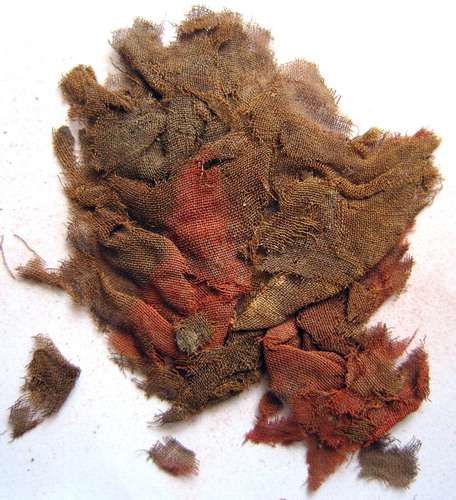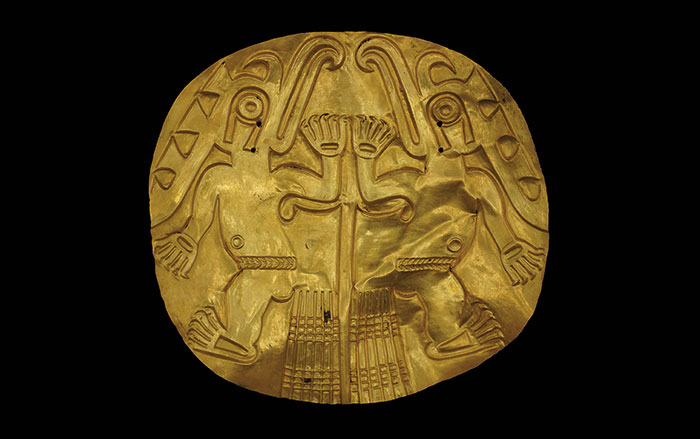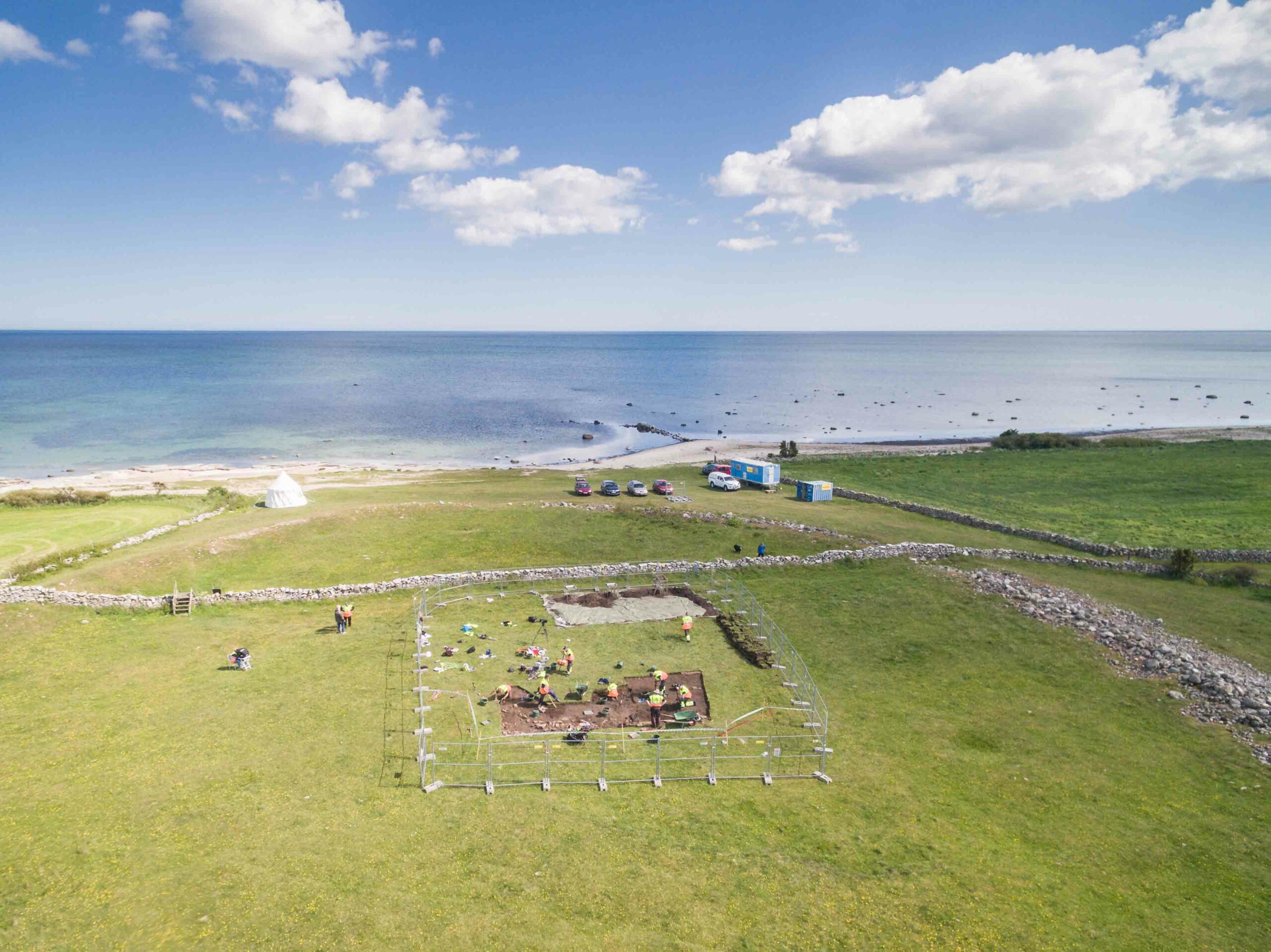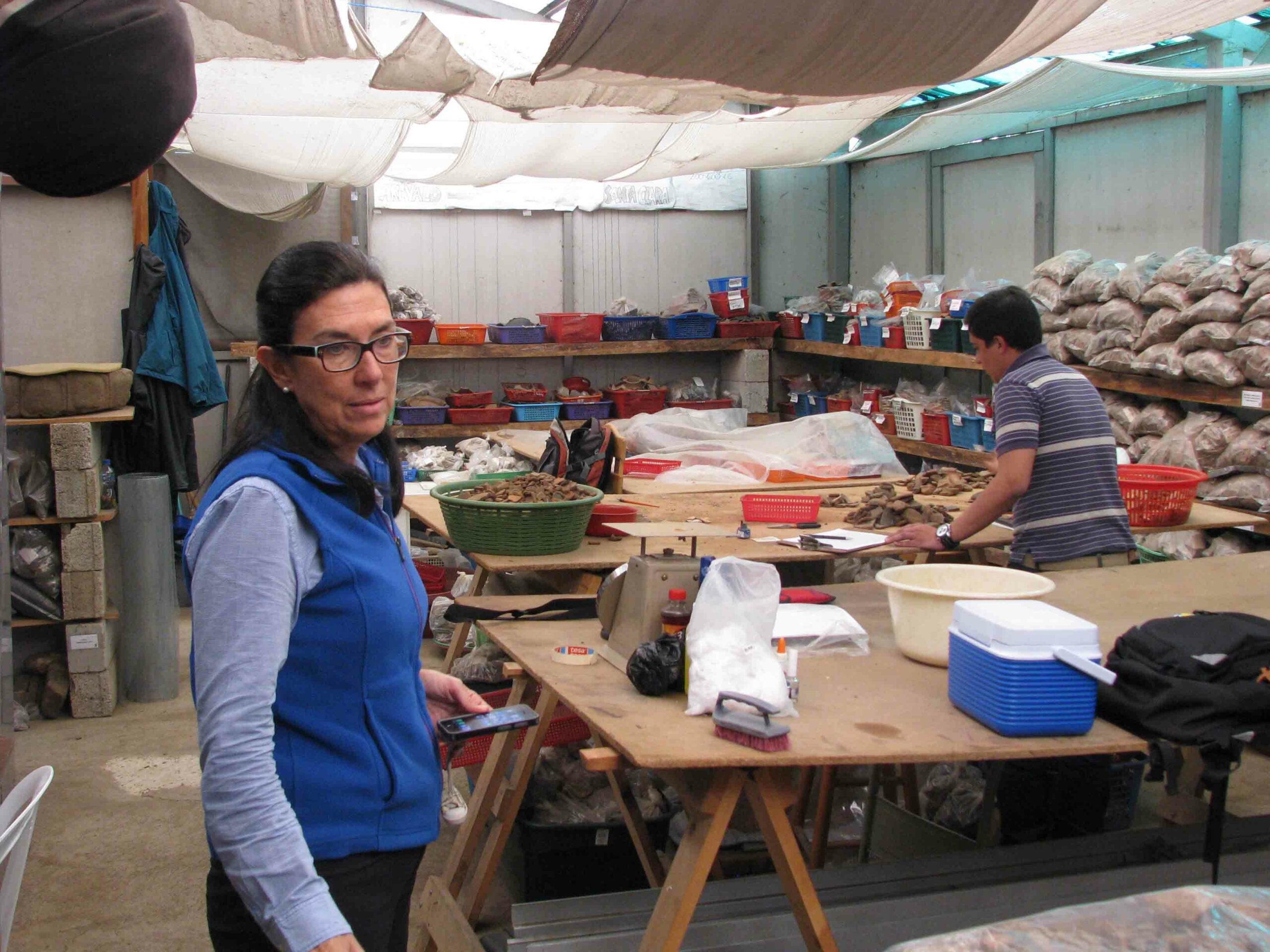
CAMBRIDGE, ENGLAND—Mark Aldenderfer of the University of California Merced and a visiting scholar at the University of Cambridge led the excavation of ten shaft tombs cut into the rock of a cliff face in Upper Mustang, Nepal. One of the tombs, Samdzong 5, yielded cloth dated to between 400 and 650 A.D., and a gold and silver funerary mask. Analysis of the cloth shows that it had been made with local materials, and silk and dyes imported from China and India. “There is no evidence for local silk production suggesting that Samdzong was inserted into the long-distance trade network of the Silk Road,” Margarita Gleba of the McDonald Institute for Archaeological Research at the University of Cambridge said in a press release. Copper, glass, and cloth beads had been sewn to the fabric. Pinholes in the funerary mask suggest that it had also been sewn to a piece of fabric, perhaps as part of a piece of decorative headwear. To read more about archaeology in Nepal, go to "Buddhism, in the Beginning."










